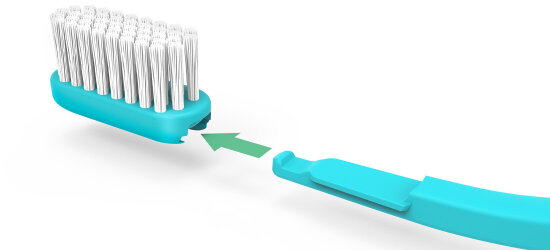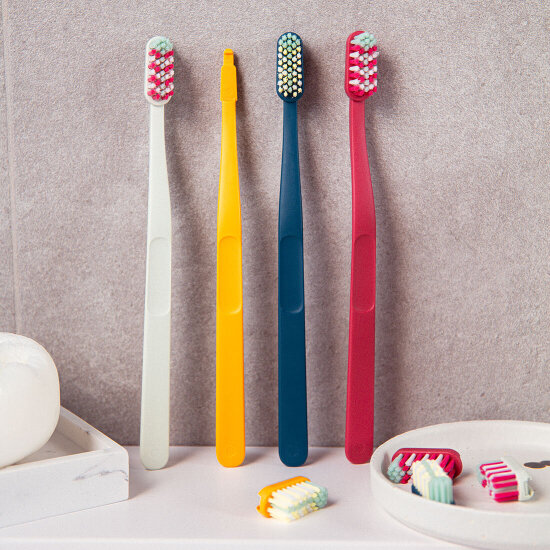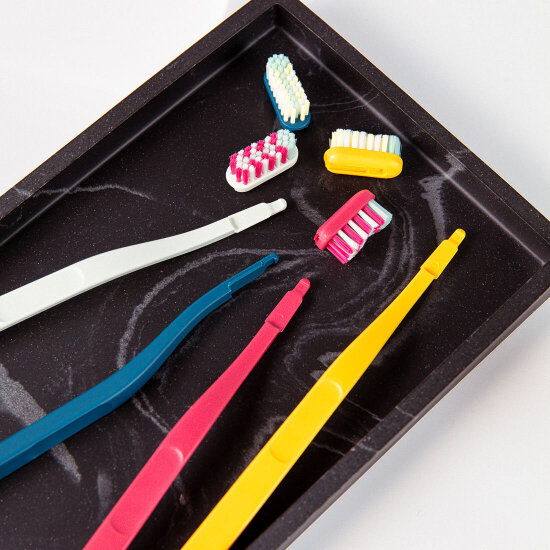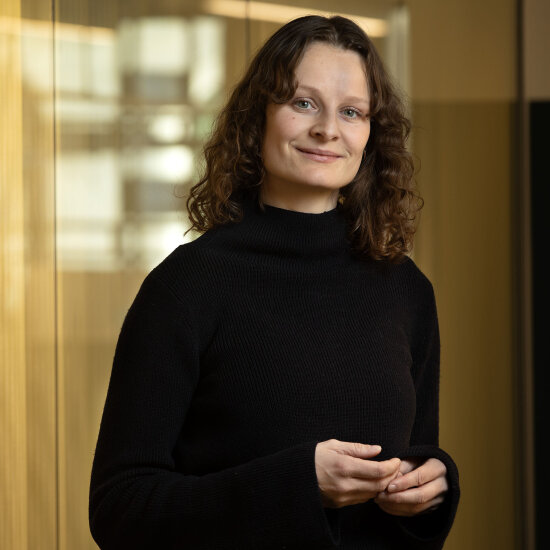
It was Martin Boldvik’s Master’s dissertation in industrial design that first launched the idea of a toothbrush with replaceable heads. Supported by Jordan and Orkla, his dissertation was submitted to the Oslo School of Architecture and Design in 2017. Jordan felt the idea was so good that they conducted consumer surveys and commissioned designers Abry & Kavanagh to explore possible solutions.
Testing, testing, testing
This was to be the start of a lengthy development project. Several alternative concepts were explored, and people from many disciplines were involved in a series of technical tests and trials of pilot products. In parallel, legal teams were investigating the situation as regards patent rights and opportunities.
The result is Jordan Change – a completely new solution for replaceable toothbrush heads. Patents are pending for the new product that was launched in the spring of 2022.


Small head, large bristles
The product development and the final design were based on three main principles:
- The head should be as small as possible, but the size of the bristle surface should be retained.
- Jordan Change should not be more expensive than a standard toothbrush. Rather, it should give added value to consumers.
- The technical solution should be transferable to other toothbrush models.
It was also important to Jordan that sustainability should not be achieved at the expense of brush functionality.
82 per cent less plastic
There is potential for Jordan Change to prevent us from discarding large amounts of plastic. According to Jordan, Norway’s consumption of plastic could be reduced by 240 tonnes a year if the entire adult population of Norway were to change their toothbrush head rather than their whole toothbrush every three months. Additionally, optimalisation would provide space for three times as many units on every pallet, which ensures more efficient transport, thereby lowering the cost to the environment.
Innovation often happens because someone challenges the existing situation. Jordan therefore encourages other businesses to keep working with students, interns and recent graduates to identify new opportunities.
Sales figures and good feedback from customers suggest that Jordan has been successful in launching a new toothbrush that has a good functionality while also appealing to increasingly environmentally aware consumers.
Jordan Change: Toothbrush with replaceable head
By: Jordan/Orkla Home & Personal Care and Abry & Kavanagh Design
Design disciplines: Industrial design
Recipient of the DOGA Award
This project has received the DOGA Award for Design and Architecture for its outstanding qualities and for showing how strategic use of design and architecture create important social, environmental and economic value.
These are three reasons why this is an exemplary project:
- The environment and the economy
Jordan has calculated that by offering replaceable toothbrush heads, they save 82 per cent of plastic per replacement. The solution is therefore favourable to the environment as well as to the economy.
- Lower price
Jordan Change is easily available, and the price is lower than for other toothbrushes of the same type – this lowers the barrier for changing your toothbrush and promotes good dental hygiene.
- Transfer value
The Change, as a technical solution, is transferable to other toothbrush models, existing and new, which is something Jordan wishes to explore further.

